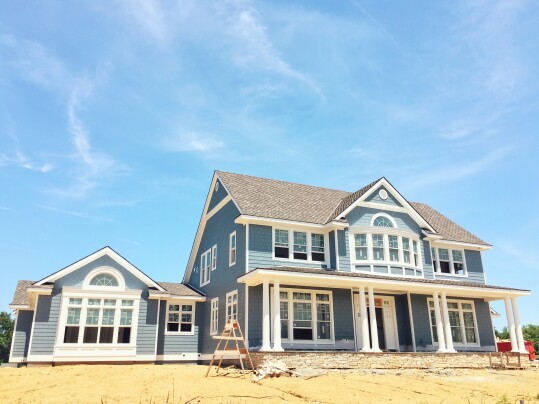Buying a house has gotten more challenging over the past few years. Mortgage rates moved higher and made affordability a bigger factor for home buyers. In fact, for nearly three years, affordability trends have been worsening. But according to ATTOM Data Solutions’ fourth-quarter 2023 U.S. Home Affordability Report, that trend has recently halted. Rob Barber, ATTOM’s CEO, says that’s good news. “The good news is that home affordability has stopped getting tougher around the U.S., at least for the moment,” Barber said. “The annual fall slowdown in the housing market clearly has helped stem the tide working against potential purchasers. Whether that’s just a temporary thing tied to seasonal market patterns is something we won’t know until next year, especially given recent signs that interest rates are coming down.” Whether affordability continues to ease in 2024 remains to be seen but, for now, the news is good for prospective home buyers. (source)
Archive for December 2023
Affordability Takes A Fourth Quarter Pause
Home Price Index Shows Values Up 4.8%
The S&P Case-Shiller Home Price Index is considered among the leading measures of U.S. home prices. It has been collecting home price data for more than 30 years and covers all nine census regions. According to its most recent release, the index shows a year-over-year price gain of 4.8 percent, up from the previous month, when prices rose 4 percent. But while the index shows an accelerating price trend, it’s based on data through October, when conditions were slightly different than they are now. Brian Luke, head of commodities, real and digital assets at S&P, says recently falling mortgage rates may lead to further price gains. “Home prices leaned into the highest mortgage rates recorded in this market cycle and continued to push higher,” Luke said. “With mortgage rates easing and the Federal Reserve guiding toward a slightly more accommodative stance, homeowners may be poised to see more appreciation.” In other words, higher rates typically slow demand from buyers, which helps soften prices. As rates come down, it may push demand – and prices – even higher. (source)
Sales of New Homes Declined In November
New home sales numbers tend to be volatile. Big increases and big declines aren’t uncommon. Revisions aren’t either. So the most recent numbers from the U.S. Census Bureau and the Department of Housing and Urban Development probably aren’t cause for too much concern. According to the data, sales fell 12.2 percent in November. That’s a significant decrease but there are a few factors that played an obvious role. One of them is mortgage rates. Rates hit highs in October and only began to ease during the month of November, so the sales numbers are likely reflecting that. Since then, average mortgage rates have been declining, which should result in an uptick in buyer demand. The sales decline also came at the time of year when sales typically begin to slow, as the holidays approach and the weather changes. Another sign that that the new-home sales trend is likely to turn around in the months ahead is builder confidence, which has shown builders are growing more optimistic. In fact, builders see sales conditions improving over the next six months. (source)
Outlook Sees Market Recovery In 2024
The most recent outlook from Fannie Mae’s Economic and Strategic Research Group has good news for potential home buyers. Released monthly, the group’s outlook covers what they think is ahead for the overall economy and housing market. In December, the group sees change ahead for 2024. In fact, the outlook says the housing market will begin to recover, albeit slowly. Doug Duncan, Fannie Mae’s senior vice president and chief economist, says they expect more home sales next year but believe the rebound will be a gradual one. “While we think home sales will start to rise over the new year, the combination of modest increases in home prices and still-elevated interest rates suggest a slow pace of recovery from previously recessionary levels of housing activity,” Duncan said. Recently declining rates have helped boost mortgage application volume already and, with rates expected to improve further next year, there is good reason to believe demand from buyers will grow. (source)
Home Sales Up After Five Months Of Decline
Sales of previously owned homes rose for the first time in five months, according to the latest numbers from the National Association of Realtors. The 0.8 percent increase was led by gains in the Midwest and South. Lawrence Yun, NAR’s chief economist, says more improvement can be expected, especially with mortgage rates trending downward. “The latest weakness in existing home sales still reflects the buyer bidding process in most of October when mortgage rates were at a two-decade high before the actual closings in November,” Yun said. “A marked turn can be expected as mortgage rates have plunged in recent weeks.” But while rates have declined significantly since October, prices have continued to climb. In fact, the NAR report found prices up 4 percent from the year before, with all four U.S. regions showing increases. Also in the report, the typical property was on the market 25 days in November and 62 percent of homes sold in under a month. (source)
Average Mortgage Rates Continue To Fall
According to the Mortgage Bankers Association’s Weekly Applications Survey, average mortgage rates fell again last week. Rates were down across all loan categories, including 30-year fixed-rate loans with both conforming and jumbo balances, loans backed by the Federal Housing Administration, 15-year fixed-rate loans, and 5/1 ARMs. Mike Fratantoni, MBA’s senior vice president and chief economist, says rates are now lower than they’ve been since June. “With the positive news about the drop in inflation, and the FOMC projections proclaiming a pivot toward rate cuts, the 30-year fixed mortgage rate reached its lowest level since June 2023,” Fratantoni said. But while rates continue to fall, the most recent decline didn’t spur much activity from borrowers. In fact, overall demand for mortgage applications was down 1.5 percent from the week before, with the number of borrowers seeking loans to buy homes down 1 percent. The MBA’s weekly survey has been conducted since 1990 and covers 75 percent of all retail residential mortgage applications. (source)
New Home Construction Is Surging
Whether you’re shopping for a new home or not, the number of new homes being built should matter to you as a home buyer – especially at a time when the inventory of homes for sale is low. That’s because new home construction is the fastest way to add to the supply of available homes for sale, and more homes for sale means less competition among buyers and fewer price spikes. In other words, new home construction can ease affordability conditions for all buyers, even ones shopping for an older home. That’s why the latest residential construction numbers from the U.S. Census Bureau and the Department of Housing and Urban Development are good for buyers. According to the most recent statistics, single-family housing starts were up 18 percent in November from the month before. When including multi-family construction, starts were up nearly 15 percent month-over-month and are now 9.3 percent higher than year-before levels. Put simply, new home construction is surging and that’s a good sign that more supply and a calmer market may be on the way in 2024. (source)







